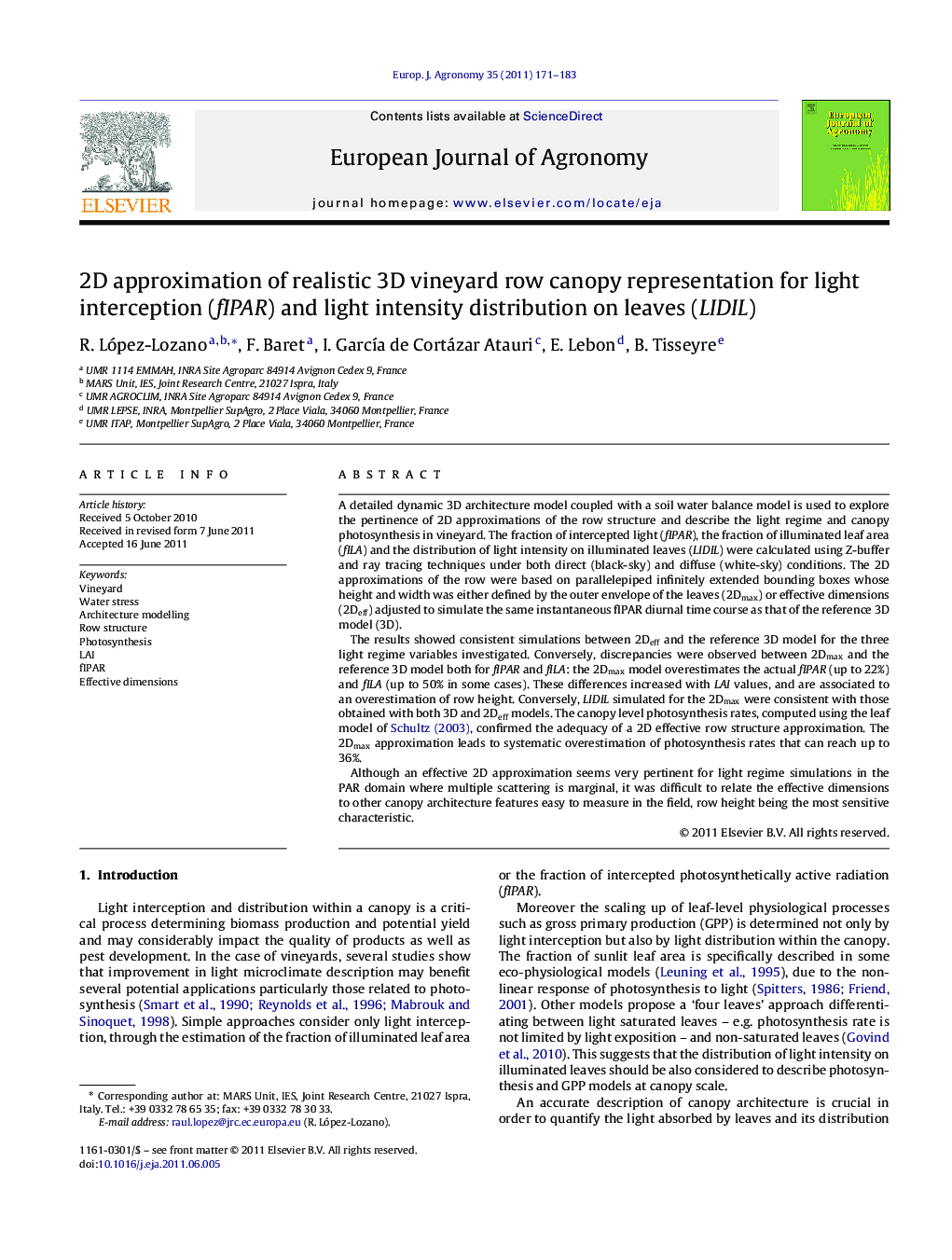| Article ID | Journal | Published Year | Pages | File Type |
|---|---|---|---|---|
| 4509288 | European Journal of Agronomy | 2011 | 13 Pages |
A detailed dynamic 3D architecture model coupled with a soil water balance model is used to explore the pertinence of 2D approximations of the row structure and describe the light regime and canopy photosynthesis in vineyard. The fraction of intercepted light (fIPAR), the fraction of illuminated leaf area (fILA) and the distribution of light intensity on illuminated leaves (LIDIL) were calculated using Z-buffer and ray tracing techniques under both direct (black-sky) and diffuse (white-sky) conditions. The 2D approximations of the row were based on parallelepiped infinitely extended bounding boxes whose height and width was either defined by the outer envelope of the leaves (2Dmax) or effective dimensions (2Deff) adjusted to simulate the same instantaneous fIPAR diurnal time course as that of the reference 3D model (3D).The results showed consistent simulations between 2Deff and the reference 3D model for the three light regime variables investigated. Conversely, discrepancies were observed between 2Dmax and the reference 3D model both for fIPAR and fILA: the 2Dmax model overestimates the actual fIPAR (up to 22%) and fILA (up to 50% in some cases). These differences increased with LAI values, and are associated to an overestimation of row height. Conversely, LIDIL simulated for the 2Dmax were consistent with those obtained with both 3D and 2Deff models. The canopy level photosynthesis rates, computed using the leaf model of Schultz (2003), confirmed the adequacy of a 2D effective row structure approximation. The 2Dmax approximation leads to systematic overestimation of photosynthesis rates that can reach up to 36%.Although an effective 2D approximation seems very pertinent for light regime simulations in the PAR domain where multiple scattering is marginal, it was difficult to relate the effective dimensions to other canopy architecture features easy to measure in the field, row height being the most sensitive characteristic.
► A detailed 3D model is used to explore the pertinence of 2D approximations to describe light regime in vineyard canopies. ► Significant differences were found between 3D and 2D models depending on the criteria used in 2D to determine row dimensions. ► A 2D approach can be valid to calculate light interception and photosynthesis rates, but row dimensions should be optimized. ► The use maximum boundaries of actual vines to define row dimensions could overestimate about 35% in photosynthesis rates.
